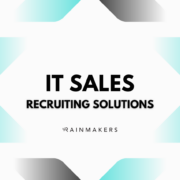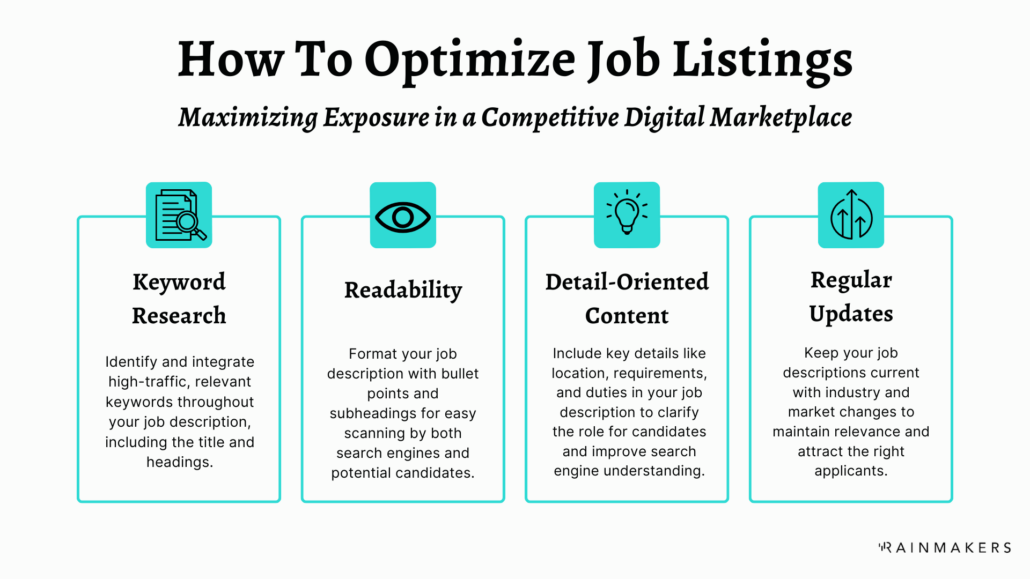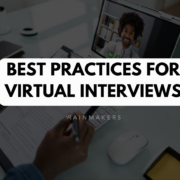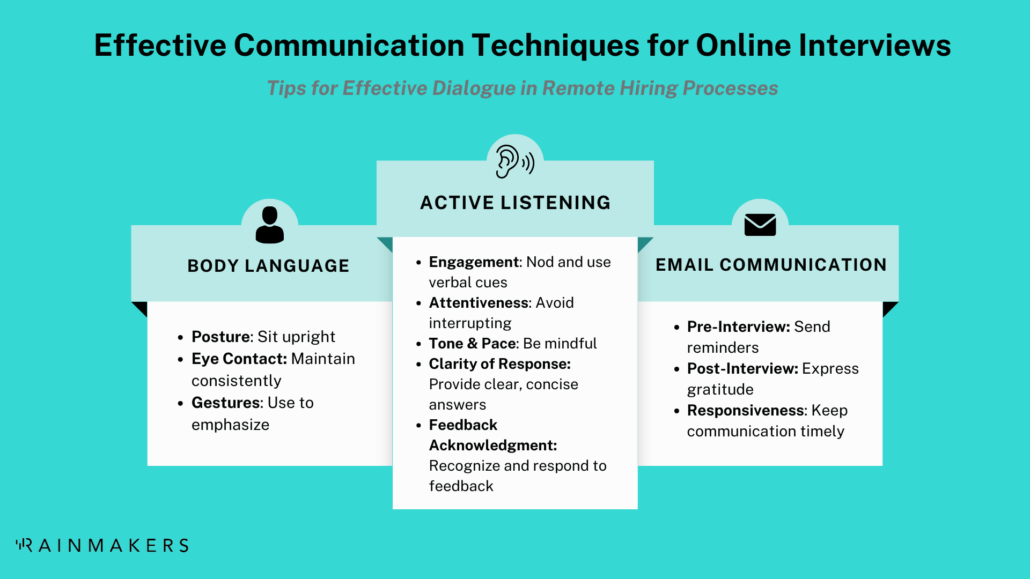The Perfect Match: IT + Sales
The landscape of IT sales is experiencing a seismic shift, propelled by the relentless pace of technological innovation and a profound transformation in business models.
As the digital frontier expands, IT sales professionals stand at the cusp of an era filled with challenges and opportunities. This comprehensive exploration explores the pivotal trends, indispensable skills, and emerging opportunities in IT sales.
Emerging Technologies in IT Sales
In an age where technology dictates the tempo of business, AI, machine learning, cloud computing, and cybersecurity redefine what IT sales professionals need to know.
These technologies are not merely altering the spectrum of offerings but reshaping the engagement strategies of sales professionals with their clientele.
Mastery over these technological behemoths is imperative for IT sales teams, as it empowers them to convincingly articulate the value of their solutions, ensuring alignment with the progressive needs of modern enterprises.
What Does an IT Salesperson Do?
The role of the IT sales professional has undergone a significant change, transitioning from basic transactional strategies to a more sophisticated consultative approach. This new era in IT sales emphasizes a comprehensive understanding of the client’s technological environment, business objectives, and the broader industry trends affecting their operations.
This shift demands a multifaceted skill set, highlighting the importance of:
- Advanced Technical Proficiency: Understanding latest technologies, software, and platforms shaping the IT landscape, ensuring sales professionals can speak confidently about how these solutions can be applied to solve specific business problems.
- Strategic Business Analysis: Leveraging analytical tools and methodologies to dissect and understand the client’s business model, competitive environment, and market positioning, facilitating the development of customized IT solutions.
- Solution Architecture: The ability to design comprehensive IT solutions that align with the client’s strategic goals, operational needs, and technology infrastructure, enhancing their competitive edge and operational efficiency.
- Client Relationship Management: Developing and maintaining strong client relationships through regular engagement, trust-building, delivering measurable value, and positioning the sales professional as a trusted advisor.
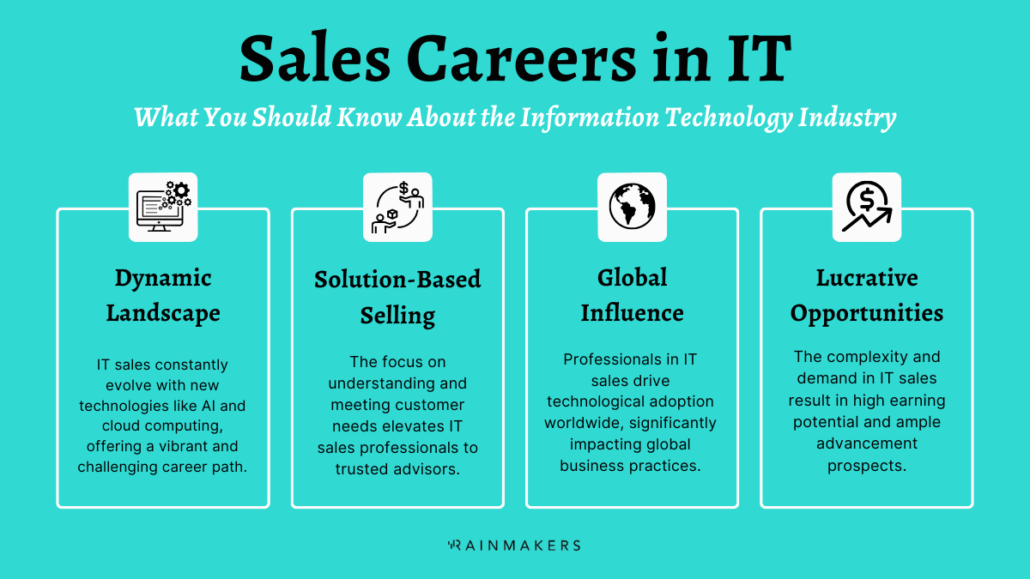
The Rise of Remote Selling
The shift towards remote work has ushered in a new era for IT sales, converting traditional client engagement models and deal-closure mechanisms. This transition demands a mastery of digital communication platforms and innovative strategies to captivate and engage clients across the digital divide.
With its unique challenges and opportunities, remote selling necessitates IT sales professionals to refine their strategies and adapt to this evolving sales environment with agility and foresight.
Core Skills for IT Sales Excellence
IT sales success is forged with diverse skills – from profound technical knowledge to strategic foresight, emotional intelligence, and the flexibility to navigate the unpredictable tides of technological trends.
Rapid learning capabilities, the prowess to foster robust relationships, articulate complex solutions with clarity, and a patient, empathetic approach to each negotiation are common traits of a successful IT sales professional.
The IT Buyer’s Mindset
In today’s market, IT buyers prioritize solutions that offer significant business value over mere technological novelty, prompting a need for IT sales professionals to understand and align with their client’s strategic goals deeply. This necessitates a shift towards meaningful engagements and adopting sophisticated sales enablement tools to effectively tailor and streamline the sales process.
To meet these evolving demands, IT sales professionals must:
- Develop a deep understanding of the client’s business challenges and objectives, positioning themselves as strategic advisors rather than just vendors.
- Engage in strategic conversations beyond technical features to demonstrate how their solutions can address specific business needs.
- Utilize advanced sales enablement technologies, such as CRM systems and analytics platforms, to enhance the efficiency of the sales process and gain valuable insights into customer behavior.
- Align their sales strategies with the client’s long-term success, leveraging their in-depth knowledge and technological tools to deliver impactful solutions.

Building Dream IT Sales Teams
Employers in the IT sales sector are positioned at a critical juncture where empowering their sales teams for the digital age is essential for maintaining a competitive edge.
Cultivating a technologically savvy workforce, fostering a consultative selling approach, and embracing remote and digital selling techniques are pivotal strategies.
Equipping teams with data analytics tools for strategic insights and encouraging a culture of collaboration and innovation will drive sales success. Building resilience and adaptability within the team ensures they can navigate the rapid changes and uncertainties of today’s digital marketplace.
Seizing Future Opportunities in IT Sales
For those IT sales professionals who are proactive, well-informed, and flexible, the future is ripe with potential for boundless growth and achievement.
By adapting to the changing landscape, sharpening essential skills, and tapping into the vein of innovation, IT sales professionals can steer through the complexities of this sector to forge impactful, fulfilling careers. At Rainmakers, we’re committed to equipping these pioneers with the critical knowledge, tools, and opportunities necessary for excelling in the art and science of IT sales.
- For Employers: Connect with us to outline the ideal characteristics of your next IT sales star. Our matching process is designed to pinpoint professionals who meet and exceed your criteria quickly. Sign up now and discover the perfect addition to your team.
- For Job Seekers: Start by shaping your profile to highlight your professional accomplishments and career aspirations. Sign up now and take the first step toward realizing your career potential.

